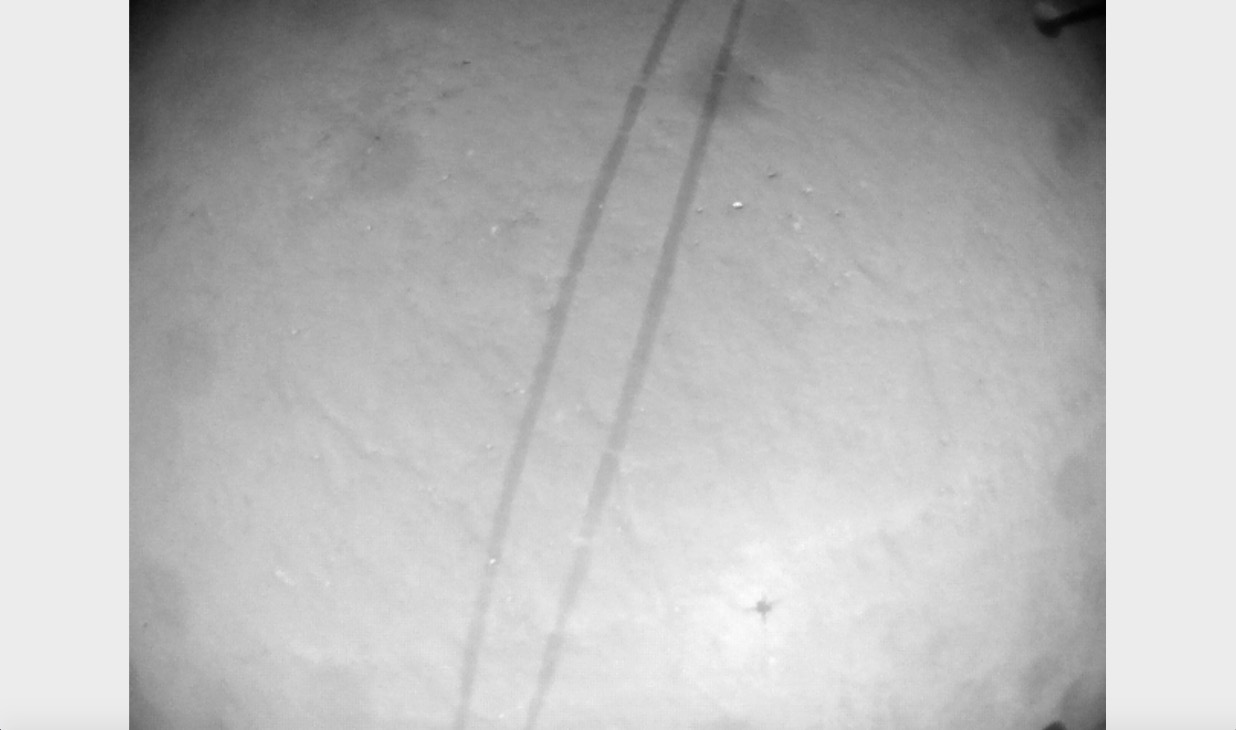NASA's Mars helicopter Ingenuity cruised above some tracks made by its robotic partner on its most recent flight, as footage captured by the rotorcraft shows.
The 4-pound (1.8 kilograms) Ingenuity conducted its 28th Red Planet flight on April 29, covering 1,371 feet (418 meters) while staying aloft for 2.5 minutes. The sortie took the little chopper over tracks made by NASA's Perseverance rover, which you can see in a video made up of images snapped by Ingenuity during the flight. (The tracks come into view around the 26-second mark.)
Ingenuity and Perseverance landed together on the floor of Mars' Jezero Crater in February 2021. Ingenuity quickly aced its five-flight technology-demonstrating primary mission, which was designed to show that powered flight is possible on the Red Planet despite its thin atmosphere. The helicopter is now serving as a scout for the car-sized Perseverance, which is hunting for signs of ancient Mars life and collecting samples for future return to Earth.
Related: 1 year later, Ingenuity helicopter still going strong on Mars

The solar-powered Ingenuity has performed incredibly well on the Red Planet, as its longevity and jam-packed flight log attest. But the little craft has run into some difficulties lately.
On May 3, Ingenuity failed to check in with Perseverance as planned — its first such missed tag-up on the Red Planet. This was no small matter, because all communications between Ingenuity and its handlers on Earth must go through Perseverance. Mission team members were able to get the two robots back in touch two days later, and they believe they know what caused the dropout.
Downlinked data indicate the anomaly "was a result of the solar-powered helicopter entering a low-power state, potentially due to the seasonal increase in the amount of dust in the Martian atmosphere and lower temperatures as winter approaches," David Agle, a media representative at NASA's Jet Propulsion Laboratory (JPL) in Southern California, which manages the missions of both Ingenuity and Perseverance, wrote in an update earlier this month.
Get the Space.com Newsletter
Breaking space news, the latest updates on rocket launches, skywatching events and more!
"The dust diminishes the amount of sunlight hitting the solar array, reducing Ingenuity's ability to recharge its six lithium-ion batteries," Agle added.
The Ingenuity and Perseverance teams have worked out a plan that they hope will get the helicopter flying again in the near future. They've sent commands that lower the temperature at which Ingenuity's onboard heaters kick on, potentially allowing the helicopter's batteries to hold onto more charge.
"I could not be prouder of our team's performance over the last year, let alone our aircraft's incredible achievements on Mars," Ingenuity Team Lead Teddy Tzanetos of JPL said in the recent update. "We are hopeful that we can accumulate battery charge in order to return to nominal operations and continue our mission into the weeks ahead."
Ingenuity had been on quite a run before encountering problems earlier this month, flying five times in the month of April alone.
Mike Wall is the author of "Out There" (Grand Central Publishing, 2018; illustrated by Karl Tate), a book about the search for alien life. Follow him on Twitter @michaeldwall. Follow us on Twitter @Spacedotcom or on Facebook.
Join our Space Forums to keep talking space on the latest missions, night sky and more! And if you have a news tip, correction or comment, let us know at: community@space.com.

Michael Wall is a Senior Space Writer with Space.com and joined the team in 2010. He primarily covers exoplanets, spaceflight and military space, but has been known to dabble in the space art beat. His book about the search for alien life, "Out There," was published on Nov. 13, 2018. Before becoming a science writer, Michael worked as a herpetologist and wildlife biologist. He has a Ph.D. in evolutionary biology from the University of Sydney, Australia, a bachelor's degree from the University of Arizona, and a graduate certificate in science writing from the University of California, Santa Cruz. To find out what his latest project is, you can follow Michael on Twitter.









